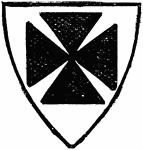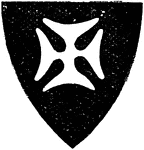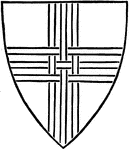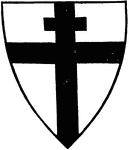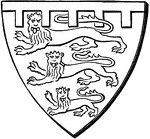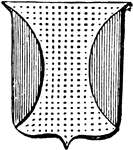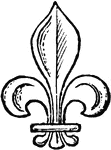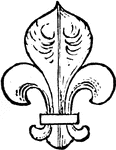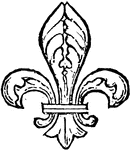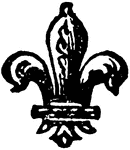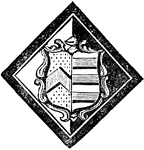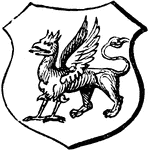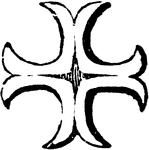
Cross Moline
"Eighth Son, the CROSS MOLINE. The differences used by armorists at the present time are nine in number.…

Cross Moline
"Cross moline. CROSS. An honourable ordinary, more used as a charge in a coat of arms than any of the…
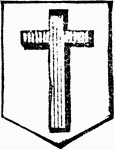
Cross of Calvary
"Cross of Calvary. CROSS. An honourable ordinary, more used as a charge in a coat of arms than any of…
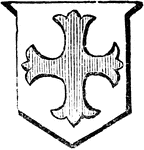
Cross Patonce
"Cross patonce. CROSS. An honourable ordinary, more used as a charge in a coat of arms than any of the…
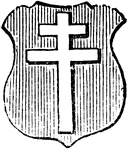
Cross Patriarchal
"Cross patriarchal. CROSS. An honourable ordinary, more used as a charge in a coat of arms than any…
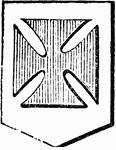
Cross Pattee
"Cross pattee. CROSS. An honourable ordinary, more used as a charge in a coat of arms than any of the…
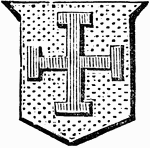
Cross Potent
"Cross potent. CROSS. An honourable ordinary, more used as a charge in a coat of arms than any of the…
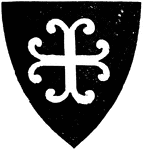
Cross Recercelée
"The Cross Recercelée is very similar to the Cross Moline, but the extremities are curled backwards."—Aveling,…
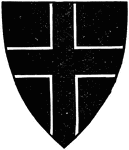
Cross Voided
"A Cross voided is not unlike the Cross double parted, but the bars do not run through or across the…
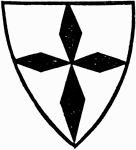
Four Fusils in Cross
"It will be observed that the charge upon the shield in this instance is not the Cross, but the lozenges."—Aveling,…
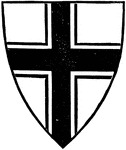
Frimbriated Cross
"The Fimbriated Cross is a cross having a border of another tincture, generally for the purpose of allowing…
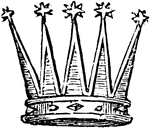
Celestial Crown
"CELESTIAL CROWN. Distinguished from any other crown by the stars on the points or rays that proceed…
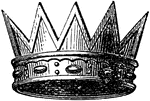
Eastern Crown
"The Eastern Crown, called also the Radiated and the Antique crown, is borne both as a crest and as…
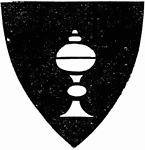
Covered Cup
"An egg-shaped, ornamental, covered cup, with a circular pedestal and base."—Aveling, 1891

Curtana
"CURTANA. The pointless sword of mercy is the principal in dignity of the three swords that are borne…
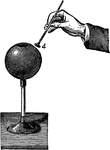
Distribution of Charge
"Distrbution of electrification on a charged hollow sphere. If an insulated conductor d be inserted…
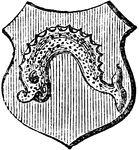
Dolphin Embowed
"Gules, a dolphin naiant embowed or. EMBOWED. Any thing bent or curved, like a bow." -Hall, 1862
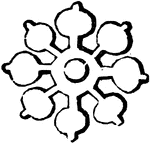
Double Quatrefoil
"Ninth Son, the DOUBLE QUATREFOIL. The differences used by armorists at the present time are nine in…
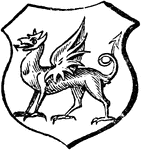
Dragon
"Argent, a dragon proper, tail nowed. DRAGON.. An imaginary monster; a mixture of beast, bird, and reptile.…
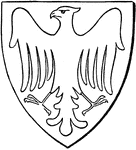
Eagle
The heraldic charge of the eagle is one of the earliest charges. It holds the same rank that the lion…

Eagle Beaked
"An eagle's head erased, beaked, or. BEAKED. The beak of a bird being of a different tint from the body…
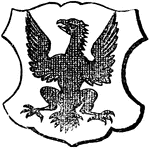
Eagle Displayed
"Argent, an eagle displayed sable. DISPLAYED. A bird whose wings are expanded and legs spread is said…
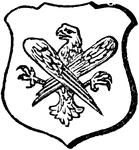
Eagle en Arrière
"Argent, an eagle proper en arrière. EN ARRIÈRE. An expression borrowed from the French,…
Kinnersley electrical air-thermometer
"Various methods have been devised for measuring electrostatic quantity, one of the simplest of which…
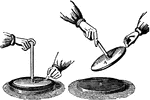
Electrophorus
"The electrophorus and meethod of using. Charge B; place A in contact with B, and touch A (left illustration).…
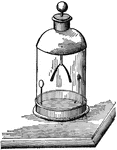
Electroscope
"The electroscope is an instrument for detecting and testing electrification. A metallic rod passes…
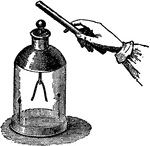
Gold Leaf Electroscope
"Gold leaf electroscope; it consists of two strips of gold foil suspended from a brass rod within a…
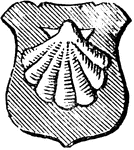
Escalop
"ESCALOP. The shell of a sea-fish, used to decorate the palmers on their way to and from Palestine;…
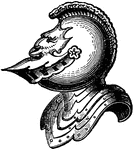
Helm of Esquire
"The Helm of Esquires and Gentlemen has the vizor closed, and is placed in profile."—Aveling,…
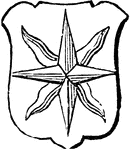
Etoile
"ETOILE. The French word for a star. It differs from the mullet in the number of points, and four of…
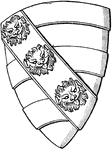
Heraldic Shield with a Lion's Face
The shield of a knight of the time of Edward II. The lion's face is a common charge in heraldry.
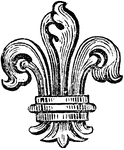
Fleur-de-Lis
"FLEUR-DE-LIS. Supposed to represent the garden-lily. It is the bearing of the Bourbons of France, but…

Fleur-De-Lis Difference
"Sixth Son, the FLEUR-DE-LIS. The differences used by armorists at the present time are nine in number.…
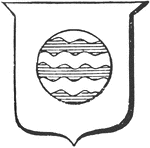
Fountain Charge
"A roundel, barry wavy of six argent and azure, or more rarely having a greater number of barrulets."…
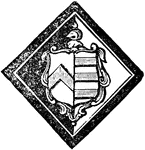
Funeral Atchievement
"The black is left on the dexter side, showing that the husband is deceased, and that his wife survives…
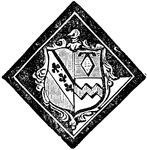
Funeral Atchievement
The image "shows that the husband and his first wife are deceased, and that the second wife is the survivor."…
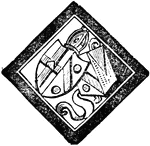
Funeral Atchievement
"The shield on the dexter side of the hatchment is parted per pale; first, the arms of the bishopric;…
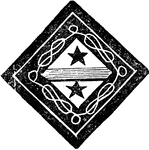
Funeral Atchievement
This image shows "the hatchment of a lady that has died unmarried. The arms of females of all ranks…
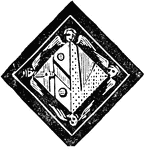
Funeral Atchievement
This image shows "the hatchment of the widow of a bishop; ... here the lozenge-shaped shield is parted…
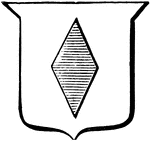
Fusil Azure
"Fusil, In heraldry, a bearing differing from the lozenge in being longer in proportion to its breadth,…
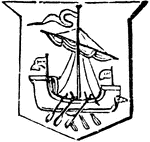
Galley
"GALLEY. An ancient vessel propelled by oars; frequently used in shields of naval officers." -Hall,…

Gambe
"GAMBE. An obsolete French word, signifying a leg, and is still used in Heraldry, for the leg of a lion…

Garbe
"Argent, a garbe proper. GARBE. The heraldic term for a sheaf of any kind of corn." -Hall, 1862
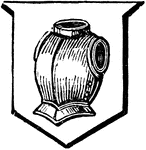
Habergeon
"Argent, an habergeon proper. HABERGEON. A coat of mail: it is also called a corslet and cuirass." -Hall,…

Hand and Bordure
"Argent, a sinister hand couped at the wrist and erected gules, within a bordure azure. BORDURE or BORDER.…
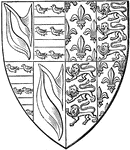
Shield of John de Hastings
"Shield of John de Hastings, K.G., Earl of Pembroke, Quatering De Hastings and De Valence, and impaling…
